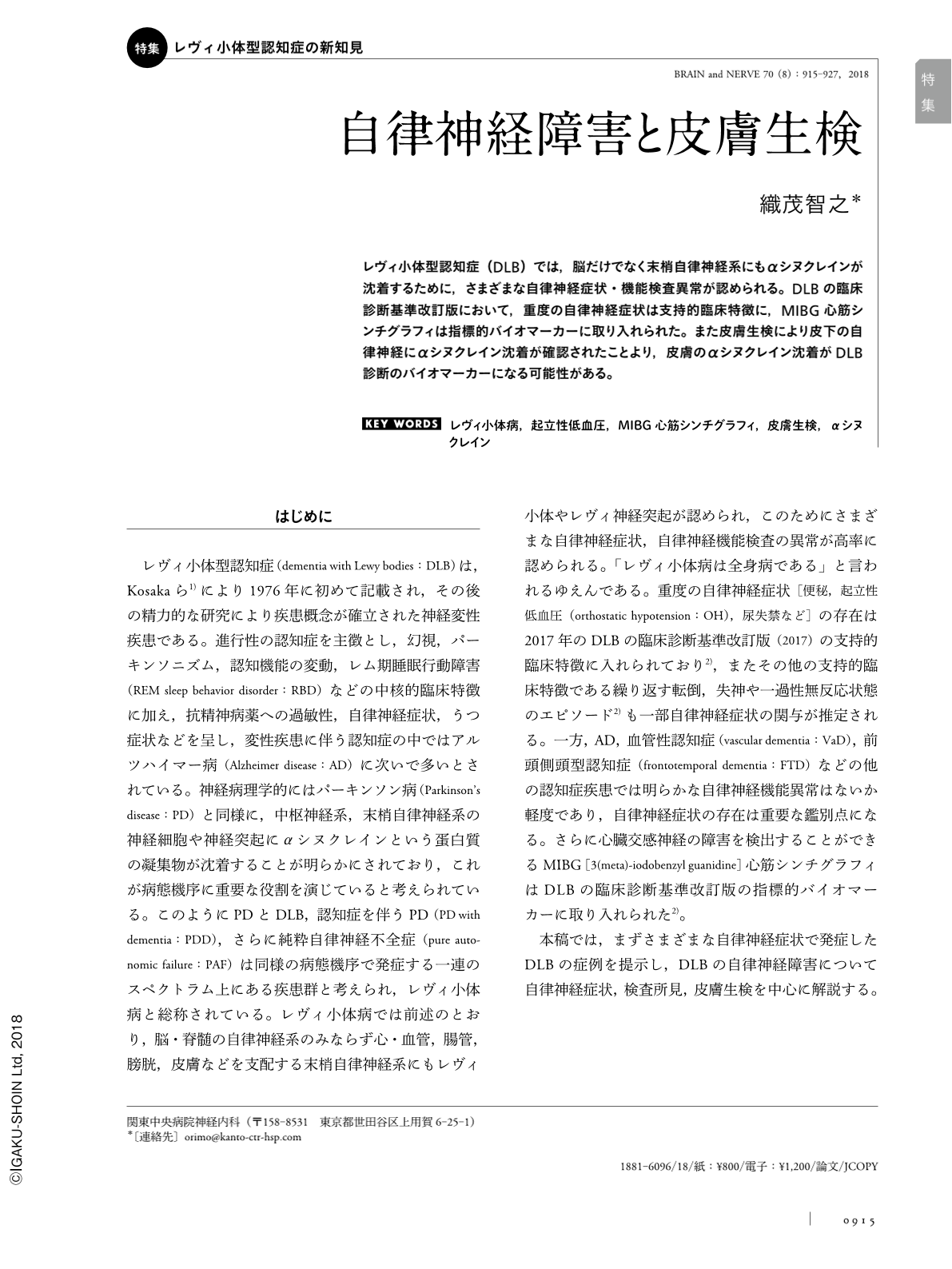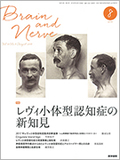Japanese
English
- 有料閲覧
- Abstract 文献概要
- 1ページ目 Look Inside
- 参考文献 Reference
レヴィ小体型認知症(DLB)では,脳だけでなく末梢自律神経系にもαシヌクレインが沈着するために,さまざまな自律神経症状・機能検査異常が認められる。DLBの臨床診断基準改訂版において,重度の自律神経症状は支持的臨床特徴に,MIBG心筋シンチグラフィは指標的バイオマーカーに取り入れられた。また皮膚生検により皮下の自律神経にαシヌクレイン沈着が確認されたことより,皮膚のαシヌクレイン沈着がDLB診断のバイオマーカーになる可能性がある。
Abstract
Neuropathological hallmarks of Lewy body disease including Parkinson's disease (PD) and dementia with Lewy bodies (DLB) are Lewy bodies in not only the central nervous system but also the peripheral autonomic nervous system. α-synuclein is a presynaptic protein, and is a major constituent of Lewy bodies. The peripheral autonomic nervous system innervates various organs such as the gastrointestinal tract, the heart, the bladder, and the skin. Severe autonomic dysfunction is one of the supportive clinical features of DLB, and reduced cardiac MIBG uptake is an indicative biomarkers of DLB according to the revised criteria for the clinical diagnosis of DLB in 2017. Recently, it was reported that α-synuclein deposits in various biopsied tissue samples, particularly in the skin, can act as a possible biomarker to diagnose PD. Above approach was conducted by using skin biopsies from patients with DLB. Phosphorylated α-synuclein deposits in the skin were found in all patients with DLB, but not in patients with non-synucleinopathy dementia or controls, suggesting that phosphorylated α-synuclein can potentially act as a diagnostic biomarker in DLB.

Copyright © 2018, Igaku-Shoin Ltd. All rights reserved.


